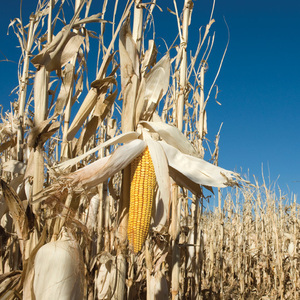EPA issues guidance on registration of corn kernel fiber pathways

May 8, 2019
BY Erin Krueger
The U.S. EPA has published a document that provides guidance on how to demonstrate that an analytical method for determining the cellulosic converted fraction of corn kernel fiber co-processed with starch at a traditional ethanol facilities satisfies the applicable regulatory requirement.
A notice posted to the agency’s website states that affected stakeholders have sought clarification regarding what the EPA will accept with regard to methods for determining the cellulosic converted fraction. “The intent of this guidance is to explain our interpretation of our regulatory requirements and to articulate clear criteria for the type of analysis and demonstrations that EPA believes would be an appropriate basis for registration under the program,” said the agency in the notice.
Advertisement
Advertisement
Within the 11-page guidance document, the EPA said it evaluates registration applications on a case-by-case basis given the best available information and science relating to analytical methods for determining the cellulosic converted fraction of corn kernel fiber co-processed with corn starch. According to the agency, the guidance document provides the agency’s current view on the manner in which facilities should demonstrate the accuracy of such analytical methods, but “does not create any new requirements and may not apply to a particular situation based on the circumstances.”
A summary provided within the guidance states, “Peer reviews submitted with registration requests for adding the cellulosic pathway for co-processing corn kernel fiber and starch that rely on a non-[voluntary consensus standards body (VCSB)] analytical method to determine the cellulosic converted fraction must not only assess whether it is theoretically possible for the chosen method to measure cellulose accurately, but must also review the data to ensure that the method has actually provided reasonably accurate results. EPA recommends that peer reviews make this demonstration by documenting that the method returns cellulosic values for a representative reference material within 20 percent of the mean value reported for that material by an independent body such as [the National Institute of Standards and Technology]. If the references demonstrate that a party using a non-VCSB analytical method has satisfied the criteria as outlined above in this guidance, the registration application should be approvable, assuming all other registration requirements are met.”
Advertisement
Advertisement
Growth Energy released a statement in response to the EPA’s action expressing disappointment and saying the new guidance will stifle innovation for second generation biofuels. “EPA's guidance changes the rules mid-game on critical pathway approvals for cellulosic ethanol,” said Emily Skor, CEO of Growth Energy. “Second generation biofuels, such as advanced cellulosic ethanol, can reduce greenhouse gas emissions by 100 percent. Rather than adding more bureaucracy to an already slow approval process, EPA should work to expand opportunities for technologies that can have a greater impact on reducing carbon emissions. EPA should instead move expeditiously to remove unnecessary hurdles and approve regulatory pathways for today’s clean fuels that promote future growth, investment and innovation in biofuel technology."
A full copy of the guidance is available on the EPA’s website.
Related Stories
The U.S. EPA on July 8 hosted virtual public hearing to gather input on the agency’s recently released proposed rule to set 2026 and 2027 RFS RVOs. Members of the biofuel industry were among those to offer testimony during the event.
The USDA’s Risk Management Agency is implementing multiple changes to the Camelina pilot insurance program for the 2026 and succeeding crop years. The changes will expand coverage options and provide greater flexibility for producers.
EcoCeres Inc. has signed a multi-year agreement to supply British Airways with sustainable aviation fuel (SAF). The fuel will be produced from 100% waste-based biomass feedstock, such as used cooking oil (UCO).
President Trump on July 4 signed the “One Big Beautiful Bill Act.” The legislation extends and updates the 45Z credit and revives a tax credit benefiting small biodiesel producers but repeals several other bioenergy-related tax incentives.
CARB on June 27 announced amendments to the state’s LCFS regulations will take effect beginning on July 1. The amended regulations were approved by the agency in November 2024, but implementation was delayed due to regulatory clarity issues.
Upcoming Events










